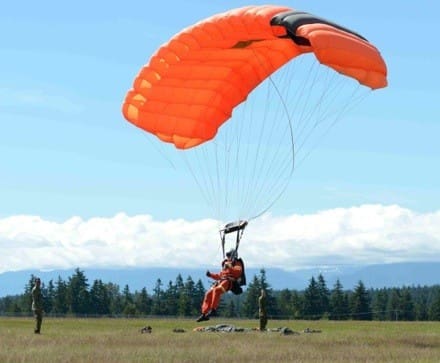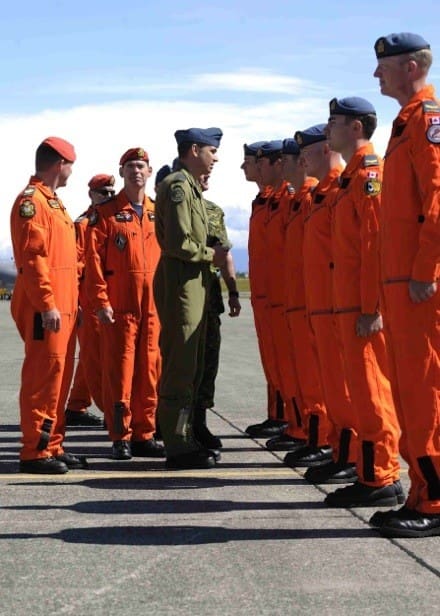Last Friday, 6 new Search and Rescue Technicians graduated from an intensive 11 month program at the Canadian Forces School of Search and Rescue, based at 19 Wing Comox in British Columbia. They join the ranks of about 160 SAR Techs who are trained in advanced trauma life-support, land and sea survival, and specialized rescue techniques, including Arctic rescue, parachuting, diving, mountain-climbing and rappelling. Although assigned to the Royal Canadian Air Force they can tryout from any of the country’s service components.
Unlike the US Air Force’s Guardian Angel Weapon System consisting of Pararescuemen (PJ), Combat Rescue Officers (CRO) and SERE Instructors, the SAR Tech’s primary focus is not Combat Search and Rescue. Their SAR area of responsibility includes over 15 million square kilometres of land and sea and encompasses the world’s longest coastline and SAR Techs as well as the skilled aircrews they work with respond to more than 8,000 incidents annually that average over 1,200 lives saved and assistance to over 20,000 persons.
Congratulations to the graduates! According to the DND only about 1 in 3 candidates is accepted into training.
Master Corporal Jérôme Bourget, from Lévis, Quebec.
Master Corporal Anthony Bullen, from Boxey, Newfoundland and Labrador.
Master Corporal Jeff Elliott, from Victoria, British Columbia.
Master Corporal Chris Martin, from Pictou, Nova Scotia.
Master Corporal Brent Nolasco, from Peterborough, Ontario.
Master Corporal Oliver Willich, from Kincardine, Ontario.
All Photos – DND
Tags: Canada




Why does the the guy in orange facing the camera look just like Obama? That’s freaky weird.
First off, he doesn’t look anything like the POTUS and second, it couldn’t be him as we know that Obama has never served his country in uniform.
Well I know he hasn’t served in any way but ehh…he kinda does.
Know a couple of these guys personally. Damn tough lot, and I’ve got nothing but respect. They epitomize the old, “adapt, improvise, and overcome,” mentality. That remote Canadian wilderness is no joke, the SAR Tech’s AO is just enormous. Little problems become big problems real quick up there.
You have to consider that the bulk of rescue and recovery work in some of their SAR shops is done via air drop simply because of limited or no airfields and/or it’s out of helo range. Odds are good, even if there is an airfield, it can’t accommodate the Hercs. Jumps are usually in unpredictable Canadian weather, into unforgiving terrain or water, day or night, and carrying all kinds of medical and survival kit (may be a few days before you’re picked up again). They have to assess and stabilize casualties on the fly, and then arrange for casevac any way they can up there: snowmobile, boat, locals, bush pilots, etc. It can be days before some casualties even see the inside of a real brick-and-mortar hospital.
The numbers cited in the article tell the story, with only about 160 guys, there’s thousands of people that woke up today on this side of the grass because of their work.
Not to mention the fact that it’s damn hard to even earn the opportunity to apply. Minimum 4+ years reg force before given the opportunity to apply for the position. Many take massive rank cuts once obtaining the wings.
Currently awaiting the opportunity